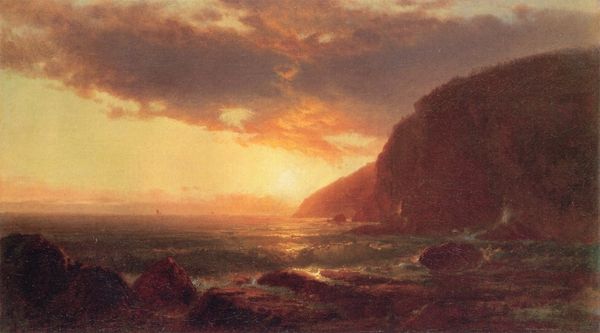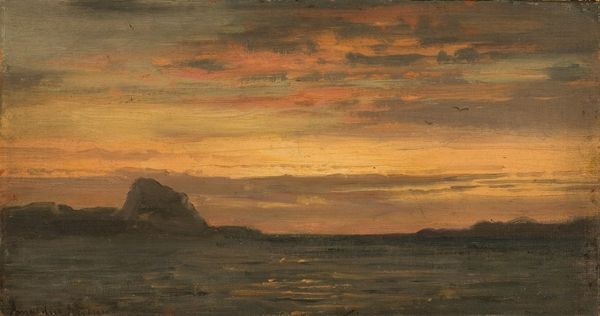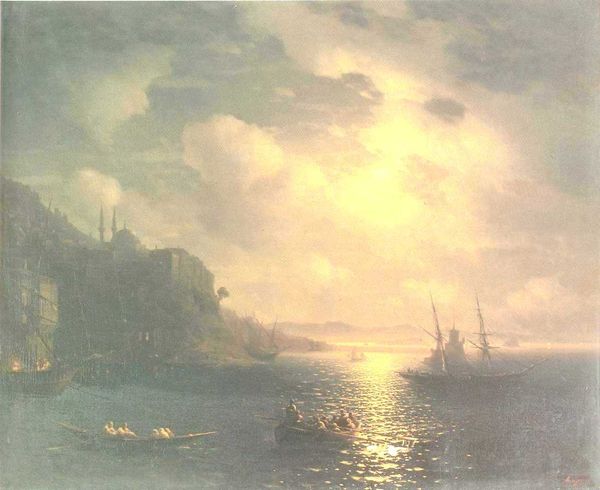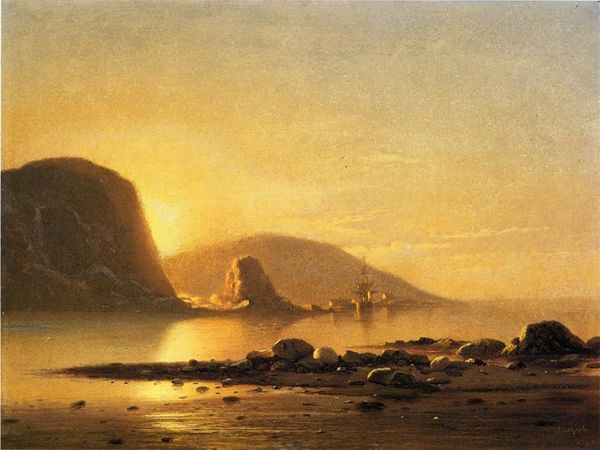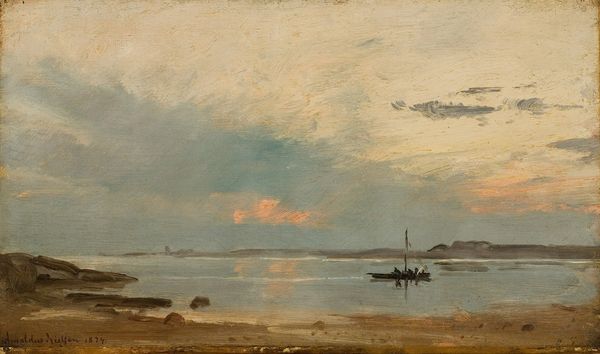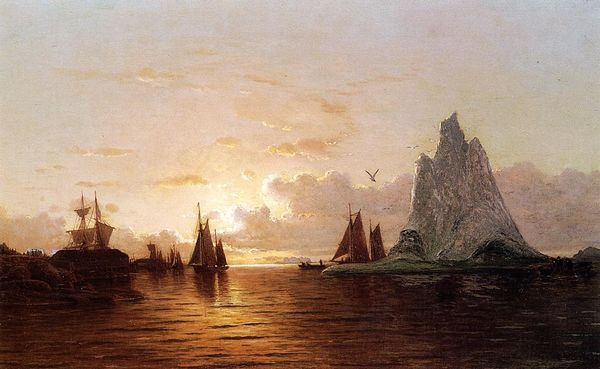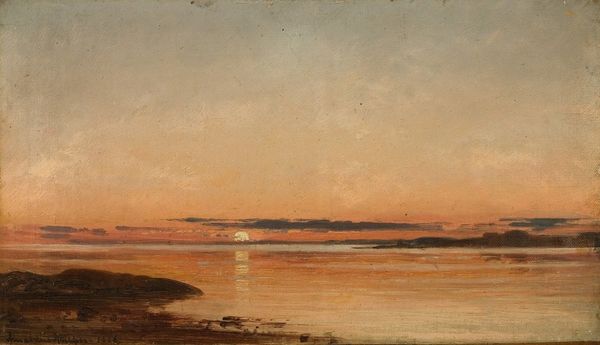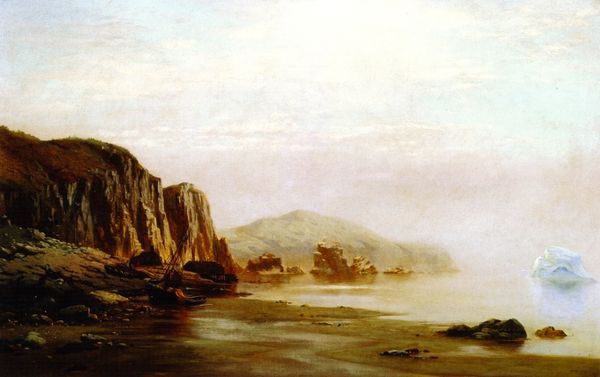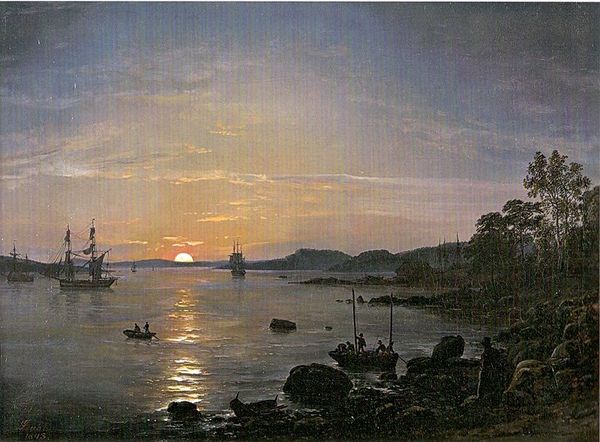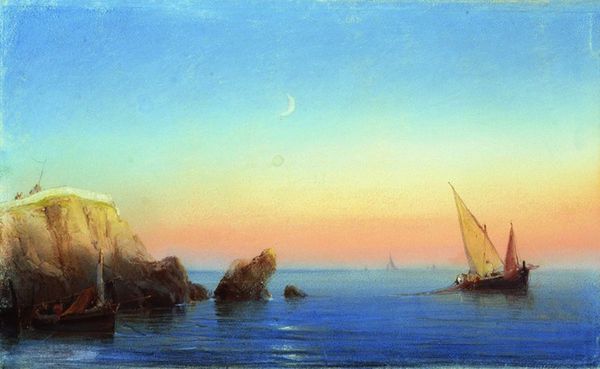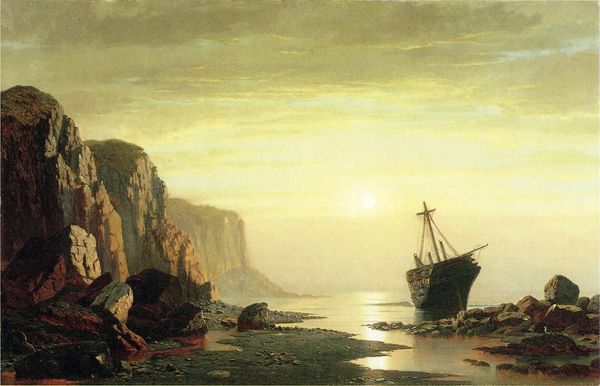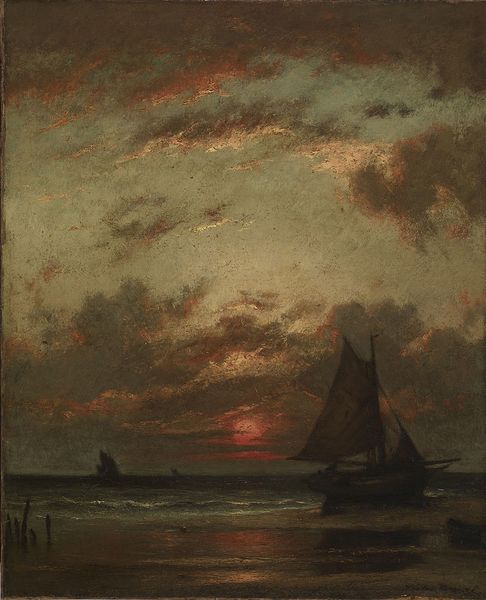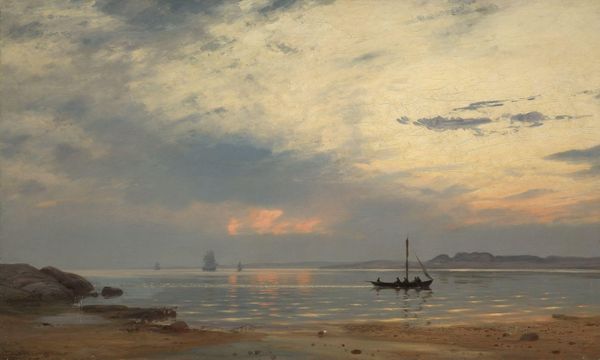
Copyright: Public domain
Editor: This is William Bradford's "Men Fishing in a Cove, Labrador," painted in 1874. It's an oil painting that strikes me as incredibly serene, with the glowing sunset reflected in the calm water. What do you see in this piece, beyond the immediate aesthetic appeal? Curator: Beyond the beauty, I see a powerful commentary on the relationship between humans and their environment, especially within the context of 19th-century colonialism. Bradford, though celebrated, often depicted Indigenous landscapes and life through a romanticized lens, implicitly supporting the expansionist narratives of the time. Do you think the romantic style flattens the struggles faced by these communities? Editor: That's a perspective I hadn't considered. I was focused on the artistry and the implied peace of the scene, but I see your point. The painting might inadvertently obscure the realities of Indigenous life and labor at that time. The sublime presentation sort of "others" the community in the cove? Curator: Precisely. We have to ask ourselves, whose story is being told, and whose is being left out? Bradford’s painting style echoes the prevalent notion of taming the wilderness, obscuring the power dynamics at play and overlooking the rights and resilience of Indigenous peoples. Editor: So, it is romantic and beautiful, but also subtly reinforces the erasure of indigenous people and their experiences. Thank you, I have learned so much about how historical context can change everything. Curator: It highlights how crucial it is to analyze art through multiple lenses, considering not only aesthetic qualities but also the socio-political contexts that shaped its creation and reception.
Comments
No comments
Be the first to comment and join the conversation on the ultimate creative platform.
